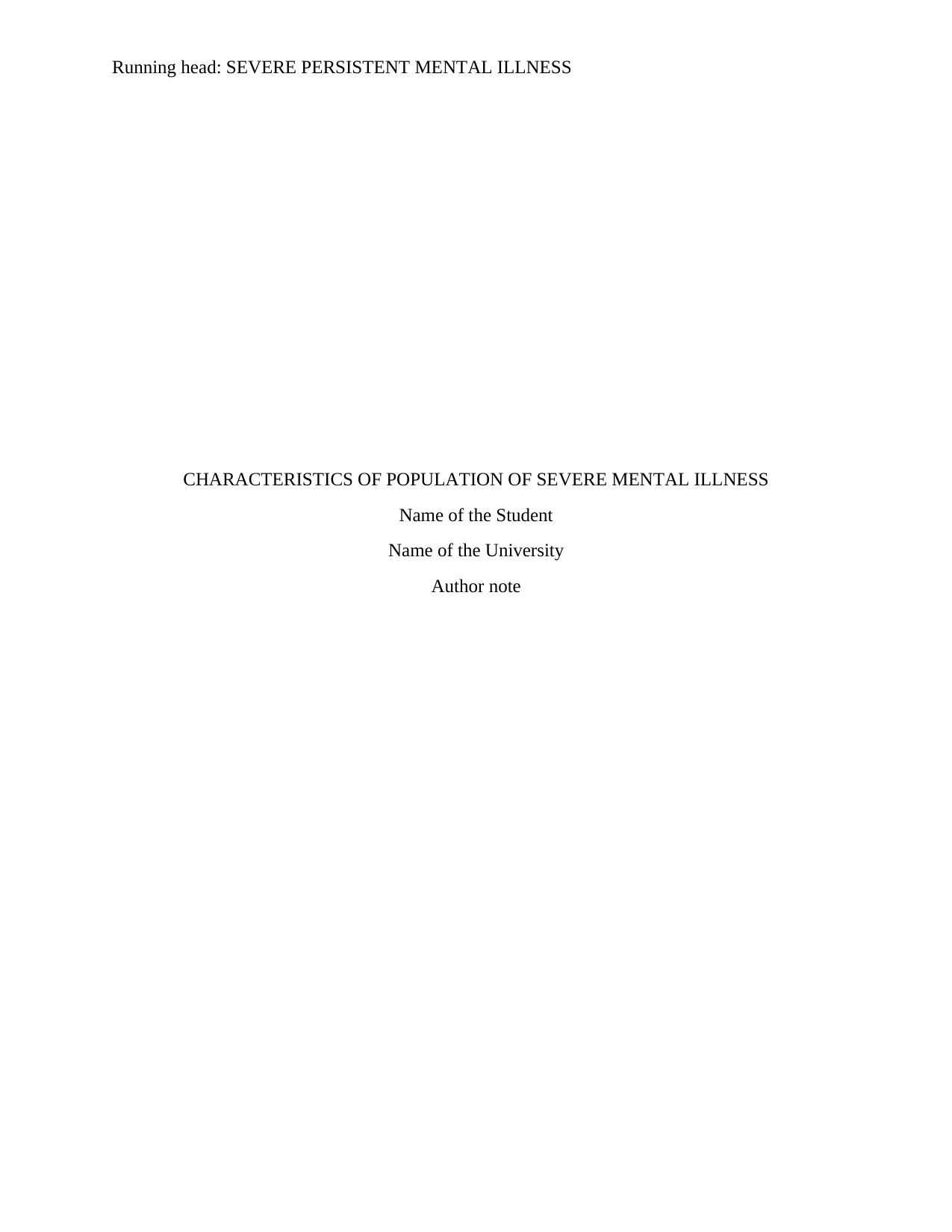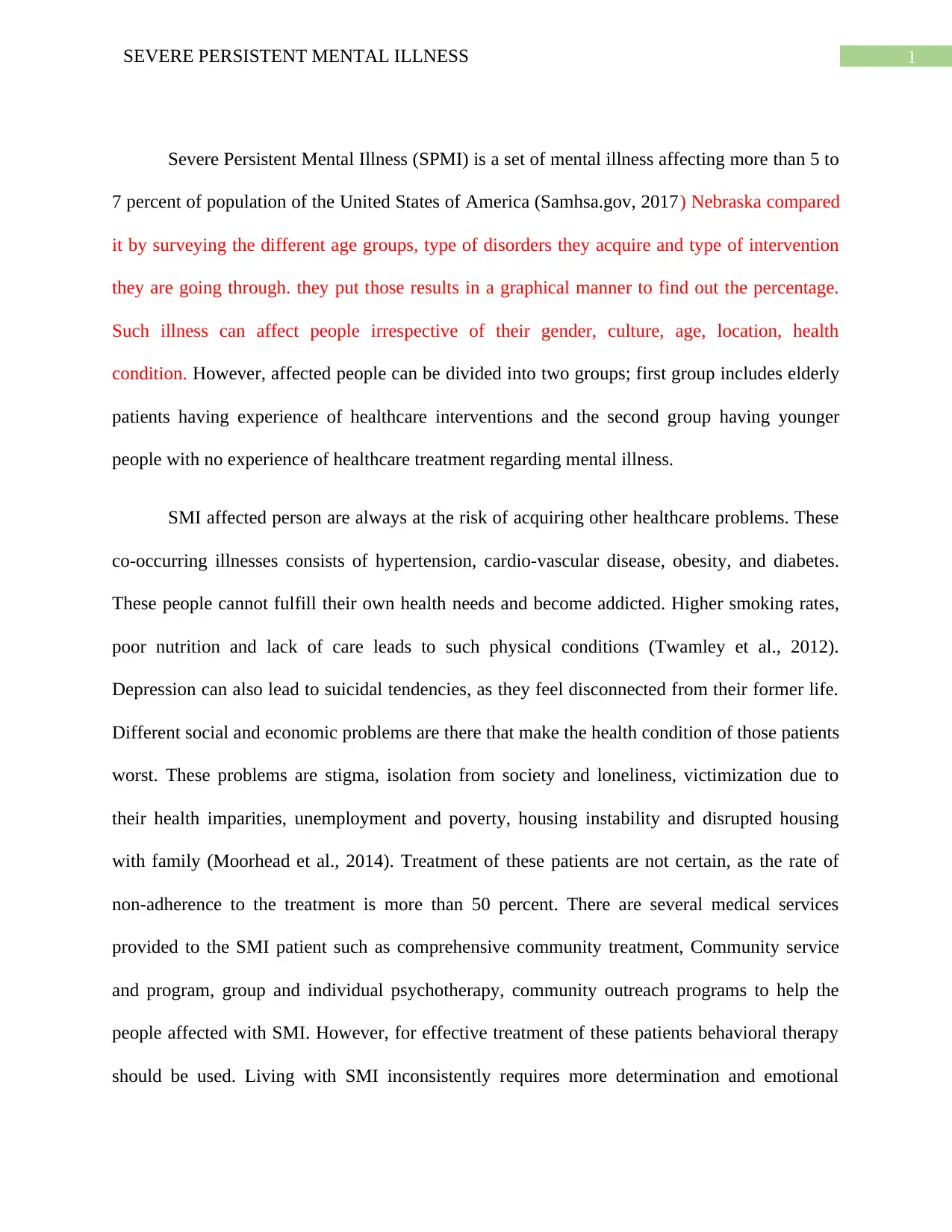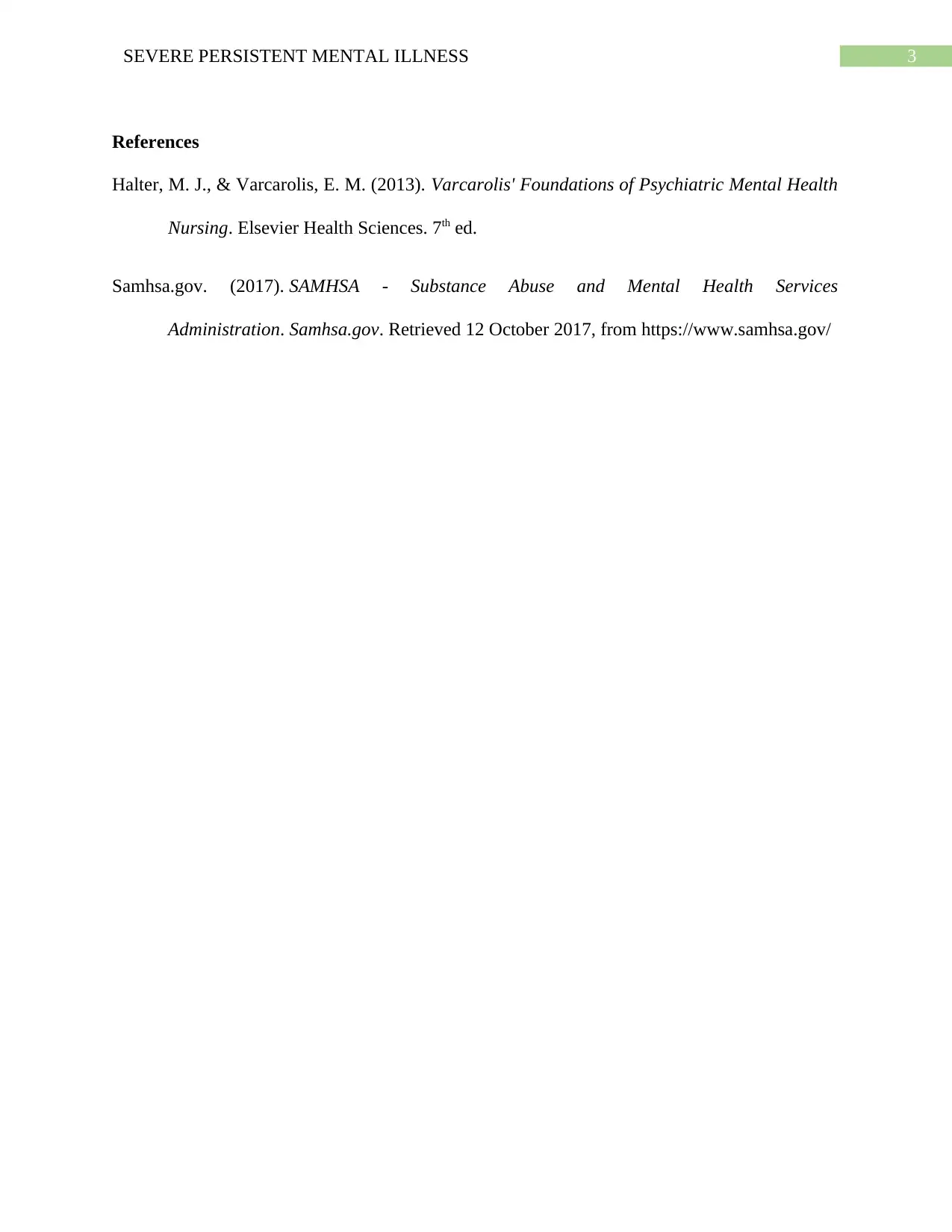University SPMI Report: Characteristics, Treatment, and Challenges
VerifiedAdded on 2020/05/08
|4
|721
|54
Report
AI Summary
This report provides an analysis of Severe Persistent Mental Illness (SPMI), focusing on the characteristics of the affected population. The study highlights that SPMI affects a significant percentage of the population and can impact individuals irrespective of age, gender, and culture, often leading to co-occurring health problems such as cardiovascular diseases and diabetes. It also explores social and economic challenges faced by these patients, including stigma, isolation, and unemployment, and examines various treatment approaches, including community-based programs and behavioral therapies. The report also discusses the challenges in treatment, such as non-adherence to medication and the importance of caregiver support. The report concludes by emphasizing the need for addressing barriers to quality healthcare for individuals with SPMI and the role of various service providers.
1 out of 4











![[object Object]](/_next/static/media/star-bottom.7253800d.svg)